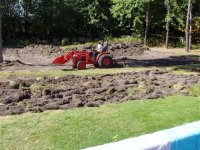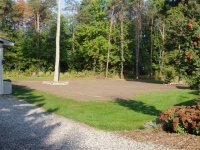I do not have a tree at the top for my L35 to swing on! 
But I do have a very nice and heavy Ganon box blade, and scarifiers that would help as mentioned. So this would be a process of just shaving it down progressively and dragging the material further up. That won't be too difficult to try. And I do have access to a borrowed disk which someone mentioned could help loosen everything before the pull.
Thanks for the ideas. I will give it a try this week. Not sure about the video though!
But I do have a very nice and heavy Ganon box blade, and scarifiers that would help as mentioned. So this would be a process of just shaving it down progressively and dragging the material further up. That won't be too difficult to try. And I do have access to a borrowed disk which someone mentioned could help loosen everything before the pull.
Thanks for the ideas. I will give it a try this week. Not sure about the video though!


